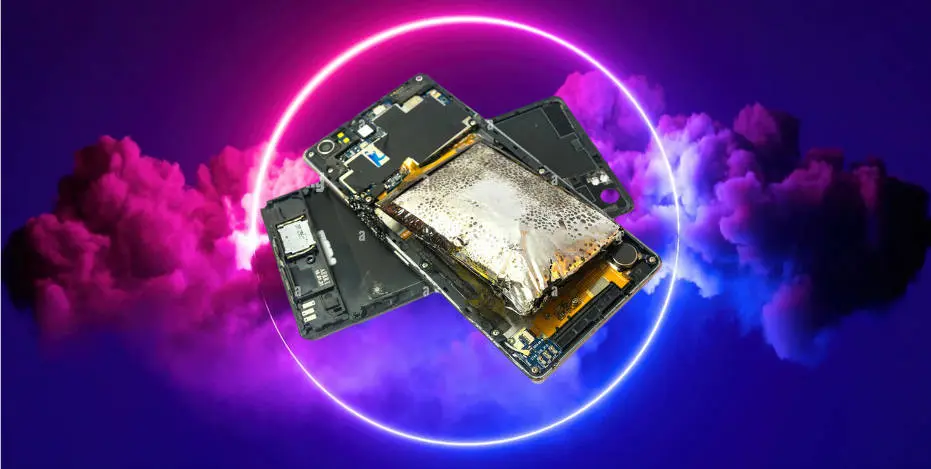That smartphone in your pocket is essentially a mini-computer, chock full of delicate electronic components coordinating flawlessly to power all the apps, photos, videos and more. So when issues like random reboots, battery drain or failure to charge arise, “short circuit” might jump to mind as a likely culprit. But how can you definitively diagnose a short? And what should you do if cell phone circuits have indeed gone haywire?
This guide explores warning signs, at-home checks with a multimeter, and next-steps to regain full mobile functionality.
What Causes Phone Circuits to Short?
Inside all smartphones, tiny pathways etched onto circuit boards carry power and data to components like the display, CPU, cameras and speakers. A “short circuit” occurs when an abnormal, low-resistance connection creates a faulty diversion of electricity flow away from the intended path.
Most commonly, phone circuit shorts stem from liquid spills seeping onto the intricate motherboard. Tap water, juice, soda, alcohol, cleaning products or a dunk in the toilet bowl enables uncontrolled electrical flows where they don’t belong. Drops find their way under screen glass too.
Other short circuit triggers include:
- Damaged charging ports allowing ingress
- Aftermarket, poor-quality chargers overloading circuits
- Bluetooth/WiFi/5G antenna component overheating
- Defective lithium-ion battery swelling and leakage
- Accidental screw or conductive debris lodged on circuit board
- General wear weakening electrical insulation over time
While modern circuits integrate various fail-safes to protect against serious meltdowns or sparks, uncontrolled power and signal diversions still disable functionality that requires professional remediation.
Let’s explore common clues short circuits lurk within your device.
Signs Your Phone May Have a Short Circuit
While the symptoms below suggest but don’t definitively prove a short, their presence warrants concern:
- Rapid battery drain – Flow deviations sap charge quickly Random restarts – Power instability cycles device
- Overheating – Excess current causes components to heat up App crashes – Power to processor fluctuates
- Camera failures – Sensitive optics malfunction first Not charging – Safety measures halt power flow
- Speaker/microphone glitches – Audio circuits compromised Unresponsive buttons – Buttons lose programming
If multiple issues coincide suddenly, a short likely damaged components. But isolating the site of errant electrical flows requires specific troubleshooting.
 How a Multimeter Checks for Phone Short Circuits
How a Multimeter Checks for Phone Short Circuits
Direct visual inspection can’t locate hidden shorts under chips or resistors. So breaking out a multimeter offers the best next step before seeking repair.
A multimeter measures electrical resistance across positive and negative points to quantify circuit integrity. Shorts or compromised component resistance alter readings compared to intact circuits.
To check a phone for shorts with a multimeter:
- Turn phone fully off
- Remove SIM card
- Disconnect battery & screen if possible
- Set multimeter to “Diode Check” or lowest Ohm scale
- Touch + and – leads to points under battery contacts
- Note baseline forward/reverse resistance
- Test contacts again if battery moved at all
- Repeat checks across multiple circuit points
- Carefully probe thick copper charging port pads and other sturdy testpoints, avoiding fragile surface mount components.
Any deviation from expected resistance baselines points to likely shorts or component issues. Mark suspect spots for repair shop reference before reassembly.
Resolving Short Circuit Phone Problems
While assessing the extent of short circuit damage cannot be done DIY, a few basic guidelines apply:
- Dry immediately if wet, avoid chargers
- Backup data if possible
- Seek professional diagnosis/remedy
- Water damage often totals phones
- Expect a $100+ repair invoice
- Extensive repairs approach replacement cost
Technicians first dry devices thoroughly, often soaking in 99% isopropyl alcohol. Then circuit boards get inspected for corrosion and faulty parts replaced. Unfortunately lingering oxidation or mineral deposits can cause problems resurfacing over time.
If repairs exceed 50-60% of replacement cost, investing in an entirely new phone often becomes the practical option after accounting for aging components inside older devices. Transferring data to fresh hardware avoids future fragility frustrations.
Simple Habits That Help Prevent Short Circuit Damage
While following best practices minimizes risk, unexpected drops into sinks or hot tubs thwart even the most prudent. But sticking to basics like:
- Using quality protective cases
- Installing screens protectors
- Keeping food/drink away
- Using manufacturer approved chargers
- Updating to newer water resistance ratings
- Insuring devices via carrier or third-party plans
…all significantly reduce chances of irreparable short circuit scenarios. Keeping backups of photos and files provides peace of mind too.
Diagnosing Short Circuits Requires an Electrician’s Skillset
While warning signs suggest when electrical and data flows inside complex smartphones go awry, definitive diagnosis requires proprietary schematics combined with an electronics expert’s seasoned troubleshooting instincts. So don’t despair if your double checks prove inconclusive. The professionals wield processes and tools matching the sophisticated circuitry packed inside that tiny gadget keeping your entire digital life connected.
